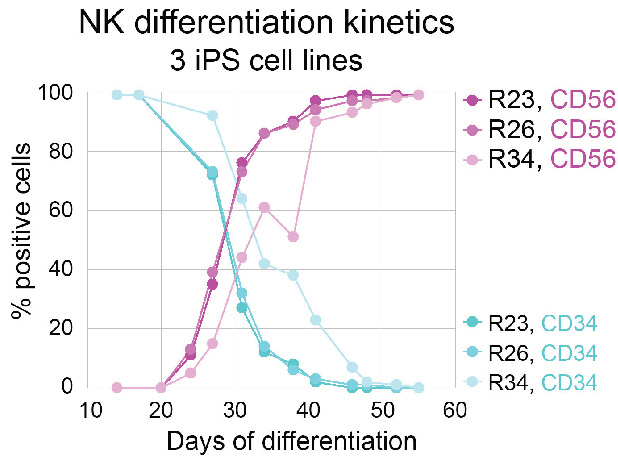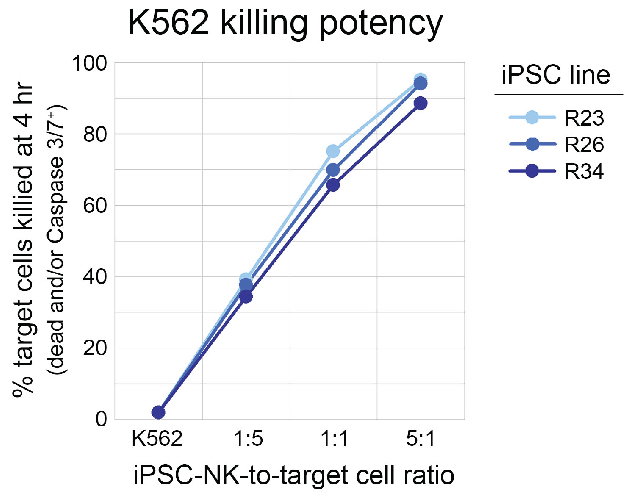
Immune Cells / iPSC-NK Cell Platform
The exciting area of iPSC-based immunotherapy takes advantage of key hallmarks of these Natural Killer (NK) T-cells: On the one hand, they can be armed with chimeric antigen receptors in the undifferentiated state to generate clonal lines overexpressing the desired transgene in 100% of the cells. In addition, the differentiation process converting iPSCs to immune cells may be harnessed for concomitant cell expansion.

Catalent researchers have developed a novel procedure to convert iPSCs into multipotent hematopoietic precursor cells (HPCs). This process reflects the birth of the first definitive HPCs via a so-called endothelial-to-hematopoietic transition, giving rise to a near-homogeneous population of CD34-positve cells.
Like their in vivo counterparts, these CD34-positive precursors are multipotent in that they can give rise to various myeloid and lymphoid cell types including macrophages, T-, and NK cells. Hence, the iPSC-derived HPCs may be considered a defined universal intermediate. Interestingly, these cells can be banked to then serve as a new starting point for shortened differentiation processes into the respective cell types.
Moreover, with regard to subsequent differentiation into NK cells, we have found a way to not only convert the cells in a homogeneous manner (see figure), but to also substantially expand the cells during that process – several thousand-fold from the HPC stage.

Thereby, this methodology avoids the use of feeder cells to stimulate – and exhaust – the terminally differentiated NK cells. Indeed, following feeder-free expansion upon differentiation, the resulting iPSC-NK cells remain highly potent at killing K562 cells, a standard cancer line to assess NK functionality (see figure).

